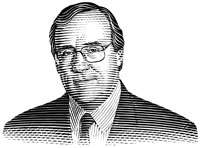 Terence Corcoran, journalist at the National Post, captures the bigger issues going on in Ontario healthcare, in his article today: Minister of Monopoly.
Terence Corcoran, journalist at the National Post, captures the bigger issues going on in Ontario healthcare, in his article today: Minister of Monopoly.
Regardless of where you land on the doctors’ New Deal, please take a few minutes to read Mr. Corcoran’s article (posted below).
Patients do not benefit when government holds all the power in healthcare. Even if doctors vote YES, let’s hope they keep the power imbalance in focus.
Enjoy!
Minister of Monopoly
National Post
Thu Aug 11 2016, Page: A10, Section: Issues & Ideas
Terence Corcoran
This coming Sunday, Ontario’s doctors will meet and vote on a proposed compensation agreement between their ersatz union, the Ontario Medical Association, and the Wynne Liberal government. It is shaping up as one of the most important events in the modern history of health care in the province.
The new agreement, known as the Physicians Services Agreement, has been superficially portrayed in the media as just another typical labour skirmish over cash between greedy overpaid medical millionaires and do-gooding politicians protecting the public good and the sanctity of universal health care.
Similar confrontations have been raging since the 1980s when the OMA was transformed into a mandatory Rand Formula organization and doctors lost the right to practice outside the system. But this year could – or should – be different. The Sunday vote is much more than a simple decision on whether doctors – along with nurses the only people in the $50-billion government funded system who actually deliver health care directly to patients – will be paid more or less over the next four years. The answer is less, but that’s not half the story.
The new compensation agreement (negotiated in secret unbeknownst to members before it was announced by the OMA in July) is the high-profile tip of a giant low profile health-care menace known as Bill 210, legislation that bears the unbearably cute title “The Patients First Act.” The objective, officially, is to improve primary care in Ontario and repair the bureaucratic shambles that currently exists.
Bill 210 was tabled in the Ontario legislature in early June by Dr. Eric Hoskins, Minister of Health and Long Term Care. It received minimal media coverage, perhaps because it arrived surrounded by vaporous clouds of bureaucratic babble, management consultancy jargon, impenetrable legalese and ideological sleaze. What can one say about a plan that promises a new system that “focuses on performance management and continuous quality improvement” and aims to improve “population health” and serve “community needs” based in equity and the delivery of healthcare “where people live”?
Underneath the sleaze and behind the clouds is the Ontario government’s attempt to put in place the power apparatus it believes it needs to install the next phase in the ongoing multi-decade effort to reconstruct the province’s perpetually failing healthcare system and install a more centralized top-down perpetually failing healthcare system.
When government holds monopoly control over any system, and the means of production of key suppliers have been nationalized, there’s no market to help patients, doctors and health-care managers make decisions. The only option for the system is to constantly increase bureaucratic control and progressively reduce the freedom for everybody else.
If doctors vote Sunday to accept the agreement, they will be pulling the first string that will allow the Wynne government to bring in reforms that will, among many other things, greatly reduce the already constrained freedom of doctors, hospital managers, and other organizations and individuals. As the OMA itself said in response to Bill 210, the legislation gives the minister of health and the government-controlled Local Health Integration Units (LHINs) “a significant increase in their command and control of the health system and many of the providers within it.”
To get that command and control, Ontario is using the oldest legal dodge in the command-and-control handbook: give the minister the power to do anything the minister wants so long as it can be said to be in the “public interest,” an undefined legal grab bag that provides command-and-control freaks near-unlimited power. “This is problematic,” says the OMA in an understatement.
As the all-powerful commissar of patient care, the Minister of Health (MOH) can reach high and low through the system in search of the public interest. The Ontario Hospital Association, in its response to Bill 210, calls the MOH’s new public interest powers “quite broad” – another understatement. It would, for example, permit the minister to issue direct orders to hospitals to lower parking fees – something the government has tried to do in the past but had no legal authority to enforce. Now it will. Moving up the chain of decision-making from the seemingly trivial business of parking fees, Bill 210 lays out a dozen instances in which the “Minister may” act in “the public interest.” One example:
“The Minister may issue operational or policy directives to a local health integration network where the Minister considers it to be in the public interest to do so.”
And on it goes: The Minister may in the public interest issue “operational or policy directives” to the board of a public hospital. Private hospitals “shall carry out every directive of the Minister” and such directions could be “general or particular.” The Minister may appoint investigators to “enter the premises” of a local health network “without a warrant” to inspect records and “report on the quality of management and administration.”
The MOH needs all these new command and control mechanisms to help it impose Bill 210’s major objectives, which is to expand the powers of the 14 local health networks that currently plan, fund and oversee health-care delivery across the province. Under the plan, the local networks – through which most of Ontario’s $50-billion health budget flows – are to take over another branch of the system, the province’s dysfunctional community and homecare operation. Also to be submerged under the centralized control model are local medical health officials. Even experts who support some of the power consolidation have their doubts. Michael Decter, a veteran of Canadian health policy, said the group he chairs, Patients Canada, supports the goals of Bill 210. But he said “we are unable to see how a major restructuring of boards and more bureaucratic management and oversight of health providers and health organizations will result in more responsive, effective, compassionate delivery of health-care services to patients.”
Most agencies and associations have adopted a wary wait-and-see attitude toward Bill 210, which will come up for detailed review and amendment in the legislature later this year. The OMA has many clear concerns. Requirements that physicians report their office operations to local authorities, including practice policies, profiles, wait times and coverage, is “intrusive” and “erodes physician self-regulation.” Other parts violate agreements the OMA has with the government.
A recent commentary by lawyers at Osler Hoskins portrays Bill 210 as a “sweeping expansion” of government and local health networks over physicians and other health-service providers. Bureaucrats will have the power to identify and plan for “physician resources” and unilaterally impose accountability agreements. The bill will impact physicians in family health teams, individual hospital departments, entire services in a single hospital, and emergency services. None of this is directly on the proxy ballot doctors will be completing for tabulation on Sunday. But it is clear the new compensation agreement is part and parcel of the Wynne government’s Bill 210 master plan.
The OMA’s position is that while the new compensation agreement may not be all that great (“Not a perfect choice. Far from it.”), they say doctors will benefit in the future because the OMA has negotiated certain clauses that will mitigate some of the worst aspects of Bill 210.
For example, to help alleviate the fact that many Ontarians have no family doctor, the OMA has agreed to work with the government “to ensure that every Ontarian who wants one has a primary care provider.” To meet that objective, the OMA will work out improved evening, weekend and holiday coverage, and produce reports on physician resource and access issues. If the OMA meets these commitments, then the government will amend a couple of clauses in Bill 210.
But that clawback still leaves physicians under increasing government control. In another concession to Bill 210, the last clause in the compensation agreement says government and the OMA “are committed to ongoing engagement … regarding health system reform and design.” Four decades of fractious government-doctor relations suggest cordial engagement between doctors and demagogic politicians over health-care reform is a political long shot.
On the other hand, Virginia Walley, president of the OMA, said in an interview this week that the compensation agreement includes an “ironclad” legal commitment from the government “not to take unilateral action” to reverse or impinge on the compensation agreement the doctors are debating on Sunday.
That would be a step forward, but how far does it go?
Enhancing bureaucratic power can only come at the expense of the people supplying the services. The last Ontario budget called for healthcare spending to increase by about 1.5 per cent a year over the next three years. With rising health-care demand, growing population and inflation alone running at 1.5 per cent, something is going to have to give within the healthcare envelope.
The OMA’s members account for 23 per cent of Ontario’s health-care spending. Doctors took unilateral cuts of up to seven per cent in the past, and the new compensation deal to be voted on Sunday suggests doctors will collectively see their real incomes fall over the next four years.
A new analysis of the proposed agreement by University of Toronto economist Jack Carr on behalf of doctors opposed to the deal concludes that as health-care demand rises, doctors will have to bear more of the costs. Carr says that under the agreement “doctors implicitly accept financial responsibility for increased utilization.” If utilization rates rise four per cent a year from three per cent currently, doctors will be forced to face reductions of almost $1 billion. If utilization rises five per cent a year – not an improbable proposition – doctors will face payment reductions of more than $2 billion.
Should Ontario’s 42,200 OMA members (including 3,000 medical students) say no to the agreement, it would send the province’s bureaucratic central planners back to the drawing board. If they accept the compensation agreement, the OMA will have helped advance the Wynne government’s imposition of its massive interventionist Patients First command-and-control healthcare system.
The hallmarks of central planning are maldistribution of resources, inadequate supply, shortages, waiting lists, lineups, price controls and breakdowns. If the economic history of command and control teaches anything, it is that you can’t put patients first by putting the suppliers of patient care last.
 Orphans make great fiction. Harry Potter leads a long list with Tom Sawyer, Anne of Green Gables and Oliver Twist.
Orphans make great fiction. Harry Potter leads a long list with Tom Sawyer, Anne of Green Gables and Oliver Twist.

